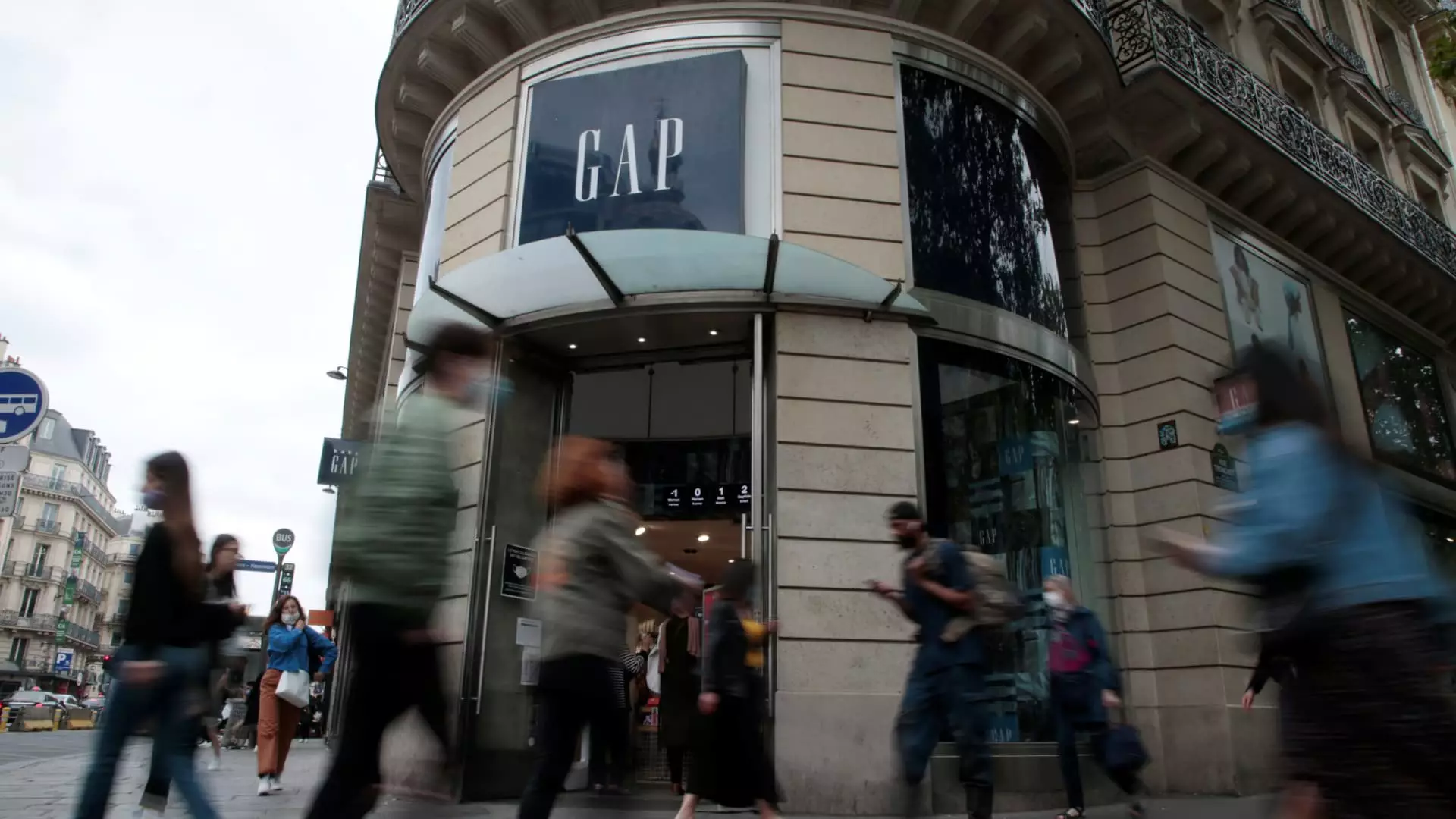In a world where the retail landscape is perpetually shifting, Gap Inc. stands at a nerve-wracking crossroads. Just recently, the apparel giant revealed that new tariffs—30% on imports from China and 10% on goods from other nations—could inflict a staggering cost of $250 million to $300 million on the company unless effective mitigation strategies are enacted. This forecast, released alongside fiscal first-quarter earnings, sent shockwaves through the market, with shares plummeting over 15% in after-hours trading. Such a dramatic downturn is no trivial affair; it signifies not only financial instability but also a lack of investor confidence, potentially leading to long-lasting repercussions for the brand.
In the immediate aftermath of announcing these projections, Gap’s management chose not to incorporate this tariff impact into their guidance—an oversight that could raise eyebrows among analysts and shareholders alike. While CEO Richard Dickson insists that they have already managed to mitigate nearly half of these costs, this suggests a precarious balance between optimism and harsh economic realities. By signaling that they may avoid significant price hikes for consumers, Dickson aims to maintain a sense of stability. However, such statements may gloss over the fundamental challenges looming just ahead.
Shifting Supply Chains: A Tentative Solution
In order to adapt to these impending financial ramifications, Gap is vigorously working to diversify its supply chain and lessen dependence on China, which already accounts for less than 3% of its sourcing—a significant decrease compared to previous years. They are eyeing domestic cotton purchases as a way to cushion the blow from tariffs. While these actions might provide short-term relief, the long-term sustainability of such measures remains dubious. The battle to maintain margins without passing costs onto consumers is an uphill struggle, especially given the ongoing volatility in global trade relations.
Moreover, the looming threat of tariffs on Vietnam, which has become a significant supplier, cannot be ignored. A potential reciprocal tariff of 46% could compound Gap’s difficulties, sending ripples through their entire operation. The reliance on regions that are themselves exposed to geopolitical fallout presents a classic case of over-dependence on unreliable sources, casting a shadow over the company’s strategic shifts.
Quarterly Performance: The Silver Lining?
Despite these ominous clouds gathering, Gap’s earnings report did present a few glimmers of hope. For the first quarter, the company exceeded Wall Street expectations for both earnings per share and revenue, reporting net income of $193 million compared to $158 million a year earlier. Old Navy performed especially well, riding a wave of growth driven by innovative marketing strategies. Yet, the positive aspects of these figures can only be viewed through a prism of caution; they may mask deeper systemic issues within Gap’s other brands, notably Athleta and Banana Republic, which are grappling with declining sales.
While Old Navy shines as the anchor brand, the performance of Gap and Banana Republic is less assured. Gap’s recent branding efforts have produced noticeable results, yet the latter’s 3% sales decline underscores the inherent challenge of reviving a brand that has lost its way. With competitors like Patagonia and Lululemon gaining ground, Banana Republic needs a cogent strategy to woo back a disenchanted customer base.
Future Challenges: Balancing Growth and Profitability
As Gap looks ahead, financial projections suggest modest growth—approximately 1% to 2%—for the full year, even while projecting flat sales for the current quarter. This pessimistic outlook should serve as a warning: the retail sector is unforgiving, and incremental gains may not be enough to please shareholders seeking substantial returns. Gross margins are expected to be weaker than anticipated, marking a further hurdle in Gap’s recovery trajectory.
It would be naïve to ignore the broader implications of Trump’s trade policies, which are coming back to haunt Gap’s ambitious turnaround strategy. The previous lack of foresight regarding tariff impacts may reflect deeper vulnerabilities in the company’s planning and adaptability. In a fiercely competitive market, where agile response to external pressures can dictate success, Gap’s slow pace could cost them dearly in an industry that demands constant innovation.
In negotiating this intricate web of challenges, Gap must strike a fine balance between driving sales and ensuring that profitability does not give way to recklessness. The coming months will serve as a critical test of not only their adaptive strategies but also their ability to maintain meaningful connections with consumers in an increasingly polarized retail environment.

